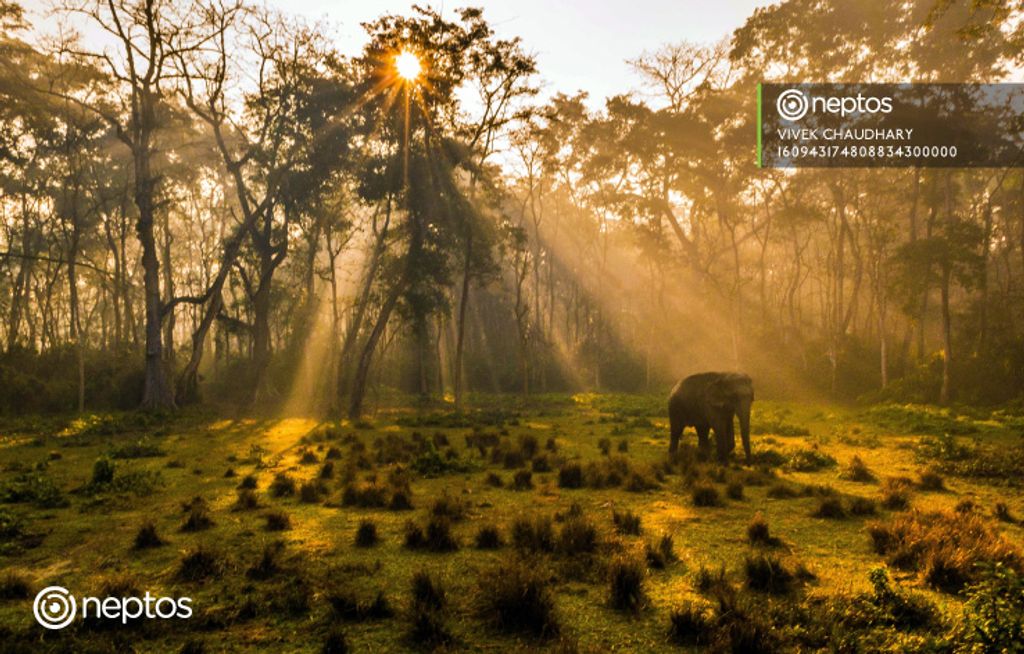Understanding the concept of Focus in Photography

Focus is important, whether it's in our daily life or it's in photography without proper focus you are far away from your perfect shot.
If you are starting out your photography journey, then it is one of the essential things that you should hardly ignore. Like other elements, you should have the proper knowledge and concept of Focus. If you're shot is out of focus then no matter how good is your other camera setting, it will result in the photographs blurry.
We will talk about different aspects of Focus in this article. So, let's get into details of Focus.
What is Focus?
In the world of Photography, Focus is closely related to sharpness. The photographed is said to be in focus when it is completely sharp. In general word, Focus is the concept or skills of taking a perfectly sharp image.
If you carefully examine the photo, there will be a plane of focus. This is the region in space that has the potential to be sharp and clear. It can also be taken as the window intersecting with the scene you are trying to photograph. If the object of your photograph touches the windows, then it is considered to be "in Focus". On the other hand, the process of moving forward and backward to achieve maximum sharpness to your subject is known as focusing.

The idea of the focused image is to let natural lights run through your lens and concentrating its rays through the camera sensor. It also depends on the hole through which rays of light travels and hits the sensor.
Focusing can be obtained either automatically or manually. Generall, Automatic Focus or autofocus can be obtained through the camera general setting. Autofocus lets the camera system drives a motor and helps to move elements in your lens to change focus. If you intend to change the focus manually, then you need to turn a ring or setting of the lens.
Manual Focus and Auto-Focus
The concept and invention of Manual focus are as old as the camera. Many cameras in the present day are presented with the same concept. Whereas, the development of Auto-focus came into the market only in the year 1977.
The use of manual focus and auto-focus differs according to the time and situation. However, most of the photographers rely on autofocus. Generally, Autofocus uses a motor that helps to focus on the subject that you are trying to photographs. The process is pretty simple, you just have to click the button on your camera and it will handle the rest.
The main reason why most photographers prefer autofocus is, it's easier and convenient in most of the situation. Meanwhile, it is faster and accurate while tracking the fast and moving object. This is one of the many reasons, why many sports & wildlife photographers rely on and take the perfectly sharp images with autofocus.
Well, Autofocus is fast and accurate in many cases, but it might not be appropriate in many conditions for instance: Dark environment. That's where the concept and use of Manual Focus come in. The use of manual focus helps to override such issues. Its proper use of manual focus helps to make a precise adjustment that camera may have missed. Besides, you can lock the manual focus if you are trying to take the series of photos in a row or continuous shot.
What are the types of Focus?
There are generally two types of focus. They both have their own strength and weakness. Let's get into their brief introduction.
Phase Detection:
It is just like the autofocus. It is fast and helps to capture the fast-moving object. However, Phase Detection is more likely to get errors and has internal misalignment issues.
Contrast Detection:
The use of Contact Detection helps to get more data about the image. While taking a large amount of data, it takes a longer time to lock the focus. As a result, it's not a good option to capture the fast-moving object. Whereas, it is best when you are capturing the still image like landscape.
Continuous vs Single-Servo Autofocus
The next thing you need to keep in mind while using focus is Continuous and Single-Servo Autofocus.
Continuous-servo is better known as Al Servo in Canon and AF-C in Nikon cameras. The meaning of Continuous-servo is that it is adjusting the focus whenever you hold down the focus button. Continuous-servo is quite important when you are trying to photograph the fast moving object.
Whereas, Single-servo is taken as One-Shot in Canon and AF-S in Nikon cameras. In this Single-Servo modes, your camera doesn’t readjust itself until you let go the focusing button and try it again. Single-Servo is quite effective when you are trying to photograph the still image. On the other hand, you don't require to adjust the focus from moment to moment in order to capture the proper focus shots.
The use of AF-On Button
AF-On button is quite tricky when you are using the autofocus. Most cameras these days will autofocus when you are pressing the shutter button halfway. This feature is nice but it might not be appropriate if you are trying to focus and capture the shot at the same time. And that's where AF-On button comes in.
It helps to switch the focus from the shutter release button and assign it to a different button. And this trick is known as the “back button focusing” in the field of photography.
AF-On button exactly works like shutter release where we have to half-press the button. The process is the same but it’s just in a different location. Well, you may not want to switch the focus this way, but it is one of the crucial features. It is effective in any situations just like when hardly want your camera to refocus while pressing the shutter release button.
AF-On button can be used in several ways and in a different situation. Here’s the two well-known practice of AF-On button:
- When you want to lock focus and click multiple shots: It’s simple to use the AF-On button to click the continuous shot. You just press the button and forget everything until you have captured the desired set of images. The process is faster than switching your lens to manual focus every time for the continuous shots.
- When you have to be patient while taking the image: There are many situations where you have to wait after focusing the subject and before capturing the image. Suppose, you saw the deer wandering into the jungle and you want to click it. You have to arrange all your camera settings and have to wait patiently for deer to hold. In such a situation, you can simply use the AF-On button to focus the deer and take the photo quickly when the deer stops. It will not only help to get a focused image, but it also helps you to refocus again quickly.
Since we mostly use autofocus it's quite hard to switch it to the AF-On button. However, you should be comfortable using your gears in numerous ways. So, try switching to AF-on mode and take the picture. We believe you won’t regret it.
Focus but where?
Now, this is a tricky thing. First of all, you should maintain your focus on your main subject. However, focus depends on the nature of your shots, your main subject, and point of interest. Suppose, if you are taking the portrait shots, then you should focus more on a person’s eyes.
Similarly, the focus will be different while taking wildlife shots, and it will be again different if you are into landscape photography. Focus is a very powerful thing, it helps you to draw the attention of the user or viewers.
There are no certain rules where exactly you should draw your focus. Whereas, the use of focus is quite creative and artistic. It can convey a different message even from a single shot. For example: if you are taking the portrait of the person, the focusing on their eyes give different feelings and emotions. While focusing on other parts of the body can give a different message.
So, it all depends on how you use the Focus.
Well, that's it, just experiment with your camera and focus. Let us know your accomplishment in the comment section.
Comments(1)

Subscribe to Our Blog
Stay up to date with the latest marketing, sales, and service tips and news.



this blog is copied from https://www.exposureguide.com/top-10-digital-photography-tips/